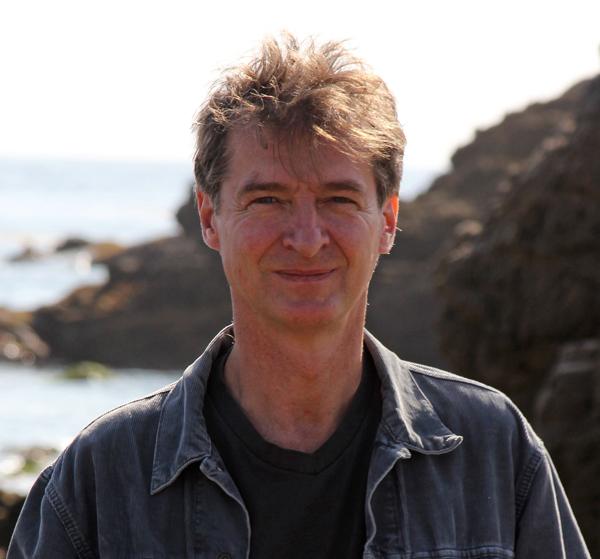Graeme Miller
Graeme Miller is an artist whose work has taken various forms, from performance, installation, video and sound.
Staff details
Graeme Miller is an artist whose work is realised across a wide range of forms, working in performance, installation, video, music and sound in the spheres of dance, theatre, TV, radio, gallery and public art. He co-founded the influential performance company Impact Theatre Co-operative in 1978 and then went on to make his own stage works including the legendary A Girl Skipping in 1990 which became a landmark in British and European Alternative Theatre. "In A Girl Skipping, play becomes illuminating, an allegorical way of describing isolation and social relationships, of transcending death by networking unstoppable movement to consistent sound. An exhilarating work, this is minimalist music theatre at its provocative best'' (City Limits). Impact’s own legacy was to forge a stage language that has resonated profoundly through Europe and the UK culminating in the dark poetic frenzy of The Carrier Frequency in 1984 – a collaboration with novelist Russell Hoban.
From the strategies of both these works to bring onstage the unmistakable print of the performers lives, their risk-taking, self-sacrifice and play – all in order to broker a kind of authenticity – emerged a simultaneous engagement with the world beyond the stage: real places in real-time.
Miller’s first solo stage work Dungeness the Desert in the Garden, commissioned by the ICA in 1987, was a staging of a real place visited over 5 years and drew his deep relationship with human and psychic geography into the sphere of performance. The Desire Paths in 1992 imported 3 weeks of city walking onto the stage but marked a critical shift in Miller’s work away from the stage as a place of entertainment to the theatre as an architectural space that measures the living City around it. The Sound Observatory, also made in 1992, aligned itself on an Islamic pattern cast over the city of Birmingham and was a philosophical space – a memory theatre that both participated in, measured and transformed its own whereabouts. It set a model for works and methods that deeply engage the viewer in recalculating their position in both place and time that has persisted through to Miller’s latest works, Moth Theatre and Track.
Moth Theatre, conceived as “theatre for insects by insects”, is a plywood cinema bathed in ultraviolet light that attracts nocturnal insects from its site to its screen. The screen is part of a video feedback loop that amplifies and echoes the movement of the unwitting participants into a choreography generated in a way by the human audience. Like much of Miller’s work since the Sound Observatory it makes a play between the formal and the chaotic. Track takes the viewer on a cinematic track-dolly ride beneath a vertical landscape creating transformation with the simplest motion and shift of position to generate maximum resonance. The legacy of stage work has bled into Miller’s staging of places and lives that are addressed directly and intimately to the individual’s perception.
Linked is a radio work that has broadcast day and night over 5 miles of East London since 2003. It followed from Miller’s 1994 pioneering use of headphones and low-power transmission in the landscape in his Artangel project Listening Ground, Lost Acres. Linked transmits the speech of former residents of 500 homes destroyed for the motorway including Miller’s own and rebuilds them in their void. This work, like his ongoing touring installation, Beheld (2006) frames the social and political in its geography. Beheld charts locations where stowaways have fallen to earth from the wheelbase of airliners in an interactive projection of image and sound in glass.
Miller continues to work as a composer and sound designer for film, stage, TV and radio writing everything from dance-scores to jingles. His work often imports the strategies and structures of music and applies them to his frameworks for people, lives, situations as a “composer of thing that include music” his subterranean installations. His installations Bassline Vienna (Wiener Festwochen 2004) and Bassline, London (Barbican 2009) chart a kind of mnemonic process in the city as it is walked by its citizens. These works are compositions about composition itself as a tool of negotiation with place, time and other people.
2013 saw Graeme Miller return to the stage as director and composer of acclaimed choreographer, Freddie Opoku-Addaie’s solo work for Dance Umbrella London, Show of Hands.
Miller has been a member of the RESCEN researching creation in the Performing Arts at Middlesex University since 1999 and is Associate Tutor in the MA in Performance Making at Goldsmiths, University of London.
